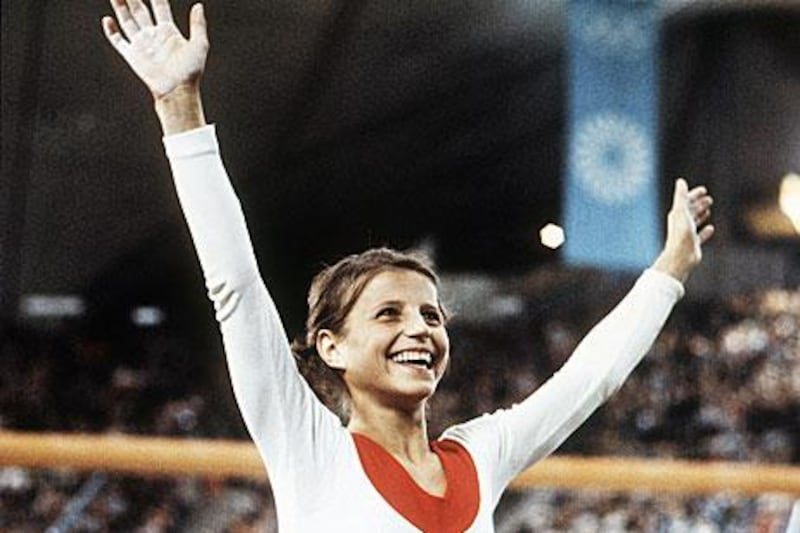With one daring back flip off the high bar at Munich in 1972, Olga Korbut changed the face of women's gymnastics.
From that moment forward, the sport abandoned its roots in ballet and became the province of tumblers and acrobats. And the era of mature women dominating the sport gave way to precocious teenagers as superstars.
Korbut was considered unseasoned, at age 17, when her performance on the uneven bars began, but the tiny Soviet athlete seized the spotlight when she successfully flipped from the bar and caught it again as she descended. The move had never been attempted at the Olympics, let alone completed.
"It was amazing," she said years later. "One day I was a nobody and the next day I was a star."
She won the silver medal in the uneven bars, and added golds in the floor exercise and on the beam, where she became the first to land a backward somersault.
Her unbridled enthusiasm also changed the sport, creating fans and imitators almost overnight.
The former gymnast Frank Bare wrote in International Gymnast magazine: "As a talented phenomenon in the sport of gymnastics … she was second to no one, and it may well be impossible to even estimate the number of youngsters who adopted the sport as participants or fans directly because of her impact on them. Her smile, personality, and charisma never faded."
Korbut competed in the 1976 Olympics in Montreal, and was part of a gold-medal winning team, but she was cast as the "older woman" at those Games as 14-year-old Nadia Comaneci gained the spotlight.
Korbut, 56, now lives in Scottsdale, Arizona, and operates the Olga Korbut Gymnastics Academy.
poberjuerge@thenational.ae
Follow
The National Sport
on
[ @SprtNationalUAE ]
& Paul Oberjuerge on
[ @PaulOberjuerge ]





